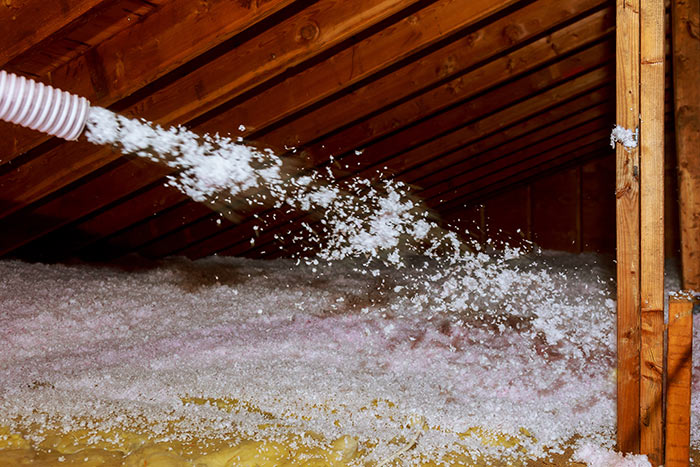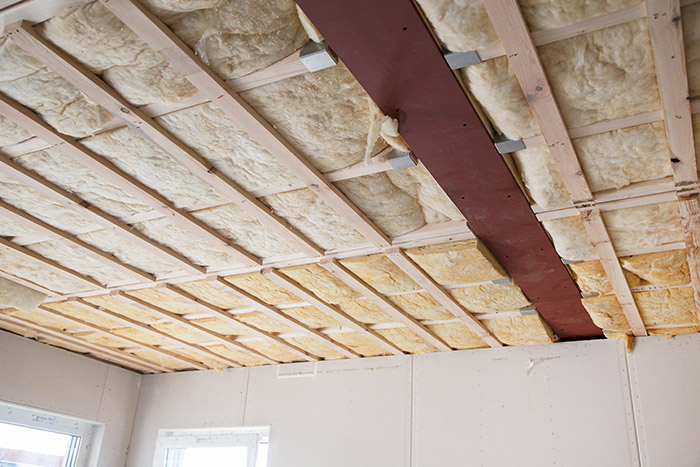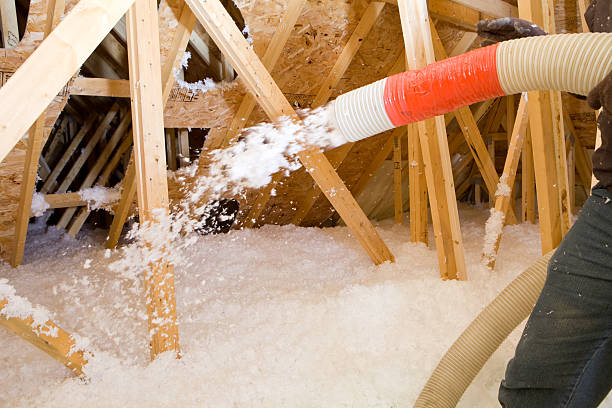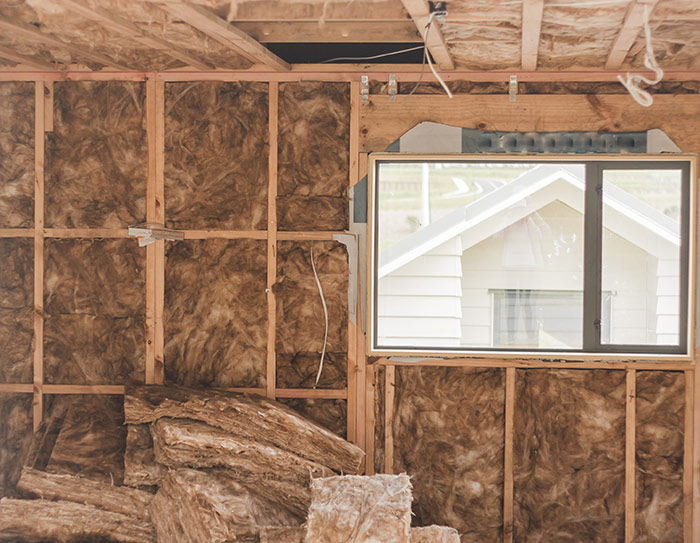
Call Us Today!
508-488-9999
Home Blown-in Insulation & Gutter Solutions
9 October 2025
Ready to lower your energy bills and make your home more comfortable year-round? Upgrading your insulation is one of the smartest ways to boost energy efficiency—and now it’s easier than ever.
Custom Insulation Company, Inc. has partnered with Mass Save® to offer free estimates and help you take advantage of generous rebates and incentives. Whether you're looking to insulate your attic, walls, or basement, we’ll guide you through every step of the process.
Don’t miss this opportunity to save energy and money—get started today with your free estimate!

29 September 2025

When it comes to keeping tenants comfortable and managing rising energy costs, insulation is one upgrade that provides immediate and long-lasting benefits. For property managers and landlords, blown-in insulation is a smart, cost-effective solution designed to meet the unique challenges of multi-family housing and rental properties.
Blown-in insulation helps reduce utility bills, which not only keeps tenants happy but also makes your property more attractive to prospective renters. Comfortable, energy-efficient homes are easier to market and retain tenants for the long term. Insulation also ensures that indoor temperatures remain consistent across units, reducing the complaints that come with cold drafts in winter or overheated spaces in summer.
Noise control is another key benefit. By filling gaps and cavities, blown-in insulation acts as a sound barrier, helping to minimize noise transfer between walls and floors. This added layer of comfort creates a quieter, more enjoyable living environment—something every tenant values.
The installation process itself is quick and minimally disruptive. Our team can often install blown-in insulation over existing insulation, meaning less downtime and fewer inconveniences for tenants. Beyond immediate comfort, it adds long-term value to your property by improving energy efficiency, reducing wear on HVAC systems, and boosting overall marketability.
At Custom Insulation Company, Inc, we specialize in blown-in insulation solutions tailored to multi-family and rental properties of all sizes. Whether you’re managing a duplex, an apartment building, or a larger rental community, we’ll help you create spaces that are more efficient, more comfortable, and more appealing to tenants.
Contact us today to learn how blown-in insulation can improve both your tenants’ satisfaction and your property’s bottom line.
15 September 2025

When it comes to making your home more comfortable and energy-efficient, blanket insulation is one of the most versatile and cost-effective solutions available. Made from materials like fiberglass or mineral wool, blanket insulation comes in rolls or batts, making it easy to install in a variety of areas throughout your home. But where does it make the biggest difference?
At Custom Insulation Company, Inc., we’ve put together a guide to the best places to use blanket insulation for maximum comfort, savings, and efficiency.
The attic is one of the top sources of heat loss in a home. Properly insulating this space with blanket insulation helps regulate temperature year-round—keeping heat in during winter and out during summer. This means lower energy bills and a more comfortable living environment.
Blanket insulation is an excellent choice for both interior and exterior walls. In exterior walls, it helps reduce heat transfer and improves overall energy efficiency. In interior walls, it provides soundproofing benefits—perfect for reducing noise between bedrooms, living areas, or home offices.
If you have floors above a basement, crawl space, or garage, adding blanket insulation can help prevent cold air from seeping into your living areas. It’s a simple way to keep floors warmer underfoot while reducing drafts.
Basement walls and ceilings are prime candidates for blanket insulation. Adding insulation here helps create a more comfortable lower level, whether you use it as storage, a utility area, or finished living space.
Installing blanket insulation in ceilings can boost both thermal performance and sound control. This is especially useful in multi-level homes, apartments, or finished basements where noise reduction adds extra comfort.
At Custom Insulation Company, Inc., we specialize in helping homeowners choose and install the right insulation solutions for every part of their home. Whether you’re looking to improve comfort, cut energy costs, or prepare for a renovation, blanket insulation is a smart choice.
Ready to improve your home’s efficiency? Contact Custom Insulation Company, Inc. today to schedule a consultation and explore your insulation options.
30 August 2025

As the leaves begin to change and temperatures start to dip, now is the perfect time to think about your home’s energy efficiency. At Custom Insulation Company, Inc., we often tell homeowners: fall is the best time to install blown-in insulation—and here’s why.
Cold weather can expose weaknesses in your home’s insulation. Drafty rooms, rising energy bills, and uneven heating are all signs your home is losing heat—especially through the attic and walls. Installing blown-in insulation in the fall ensures your home is sealed and ready to handle New England’s colder months before they arrive.
The earlier you insulate, the sooner you start saving. Blown-in insulation creates a dense, thermal barrier that keeps warm air in and cold air out. By installing it in the fall, you'll enjoy reduced heating costs throughout the entire winter—and even better comfort inside your home.
Fall is the ideal “sweet spot” for insulation upgrades. Once winter hits, demand for insulation services spikes, and availability may become limited. Scheduling your project now ensures flexible timing, better pricing, and faster turnaround.
Unlike some other home upgrades, blown-in insulation is fast to install and doesn’t require major disruption to your home. Our experienced team can usually complete the job in just a few hours, leaving your home warmer, more efficient, and ready for whatever winter brings.
Fall is also a great time to explore local and state energy efficiency programs. Many utility companies offer rebates or incentives for insulation upgrades—especially when completed before peak heating season. We can help guide you through what’s available.
Don’t wait until you're layering on blankets or watching your heating bill climb. Let Custom Insulation Company, Inc. help you make your home warmer, more comfortable, and more efficient this fall—with professionally installed blown-in insulation.
15 August 2025

When it comes to improving your home’s energy efficiency, few upgrades offer as much impact per dollar as proper insulation — especially blanket insulation. Also known as batt or roll insulation, this material is widely used in both new builds and retrofit projects because it’s affordable, easy to install, and highly effective at slowing the transfer of heat.
But where you install blanket insulation matters just as much as the type you choose. If you're looking to get the most energy savings for your investment, here are the key areas in your home where blanket insulation can make a big difference.
Heat rises — and in winter, it escapes right through your attic if it’s not properly insulated. In the summer, a poorly insulated attic can also trap radiant heat, forcing your AC to work overtime. Installing blanket insulation between the attic joists helps regulate indoor temperatures and keeps energy costs down year-round.
If your attic already has insulation, adding another layer of blanket insulation (as long as it's not compressed) can further increase your R-value and improve efficiency.
Exterior walls are constantly exposed to the elements. Batt insulation installed between wall studs creates a thermal barrier that keeps conditioned air inside and outside air where it belongs. This not only helps lower heating and cooling bills but also improves indoor comfort by reducing drafts and cold spots.
For homes undergoing renovations or additions, it’s the perfect time to add or upgrade wall insulation before drywall goes back up.
Many homeowners overlook the basement, but insulating this space is essential — especially if it's partially or fully above ground. Blanket insulation can be installed between framing studs on finished basement walls, or in the rim joists around the perimeter of the basement ceiling.
These areas are common sources of heat loss and air leakage. Properly insulating them improves energy performance and can also help prevent moisture problems.
If you have a room above a garage or crawl space, chances are it’s colder than the rest of the house in the winter. Blanket insulation can be installed between floor joists to prevent heat loss into the unconditioned space below, improving the comfort of the living area above.
This is also a great solution for bonus rooms, sunrooms, and enclosed porches that often suffer from uneven temperatures.
While not directly tied to energy savings, adding blanket insulation to interior walls can help regulate room-to-room temperatures and reduce noise. It’s especially useful between bedrooms, bathrooms, or home offices for added comfort and privacy.
At Custom Insulation Company, Inc., we specialize in helping homeowners identify where insulation upgrades will make the biggest impact. Blanket insulation remains one of the most versatile and cost-effective materials available — and when it's installed in the right places, the savings add up quickly.
If you’re unsure about your home’s current insulation levels or want expert advice on where to insulate next, our team is here to help.
Contact Custom Insulation Company, Inc. today to schedule a home assessment or request a quote. Let’s make your home more comfortable, efficient, and affordable — one layer of insulation at a time.
30 July 2025

Upgrading your attic with blown-in insulation is one of the smartest moves you can make to improve your home’s energy efficiency, comfort, and even resale value. But before the insulation goes in, a little preparation goes a long way. At Custom Insulation Company, Inc., we want homeowners to get the most out of their investment—starting with a properly prepared attic.
First things first: if your attic is used for storage, it’s time to clear it out. Blown-in insulation needs to be evenly distributed across the entire attic floor. Boxes, bins, or stored furniture will block coverage and reduce the insulation’s effectiveness. Remove all items before the installation team arrives, and consider finding a new storage solution if you plan to maximize your attic’s energy-saving potential.
Before any insulation is added, it’s crucial to seal up gaps, cracks, or openings around wiring, plumbing, or framing. These small leaks may seem minor, but they can lead to significant heat loss in winter and increased cooling costs in summer. Our team will typically perform a quick inspection and recommend sealing measures if needed, often using spray foam or caulking in key areas.
Moisture and insulation do not mix. If your attic shows signs of leaks, condensation, or mold, those problems should be addressed before insulation is installed. Trapped moisture can reduce insulation performance and lead to long-term damage. If you're not sure what to look for, we can help identify potential issues during our initial assessment.
Proper attic ventilation helps regulate temperature and prevent moisture buildup. Before installing blown-in insulation, make sure that soffit vents, ridge vents, or gable vents are unobstructed. This keeps air circulating, which improves indoor air quality and helps your insulation work more efficiently.
To keep insulation from blocking airflow, we often install baffles (also called rafter vents) near the eaves. These guide air from soffit vents into the attic. In some homes, insulation dams or barriers may also be added around light fixtures, chimneys, or access hatches to ensure safety and compliance with building codes.
Every home is different, and a professional eye can spot issues you might miss. At Custom Insulation Company, Inc., we offer thorough attic evaluations and will walk you through every step before installation. We’ll ensure your attic is prepped, safe, and ready for a successful blown-in insulation upgrade.
Give us a call or schedule your free attic inspection today. A more comfortable, energy-efficient home is just one project away—with Custom Insulation Company, Inc., it’s done right the first time.
23 July 2025

Whether you're building a new home or upgrading an older one, proper insulation is one of the smartest investments you can make. Blanket insulation—commonly available in batts or rolls—is a popular choice for its affordability, ease of installation, and reliable performance. But how and when it's installed can vary significantly depending on whether you're working with new construction or completing a retrofit. Let’s break down the key differences.
In new construction, the process is typically more straightforward. Since the walls, ceilings, and floors are open and accessible before drywall is installed, our team can fit insulation seamlessly into place with minimal disruption. This allows us to ensure complete coverage, precise cuts, and optimal R-value performance. It's faster, cleaner, and highly cost-effective during the early stages of a build. If you're planning a custom home or commercial project, installing blanket insulation early ensures long-term energy efficiency and comfort from day one.
Retrofits, on the other hand, require a more customized approach. In existing buildings, we're working around finished walls, existing utilities, and sometimes outdated or improperly installed insulation. Access can be limited, and extra care must be taken to minimize disruption while improving thermal performance. Despite the added complexity, retrofitting with blanket insulation is still a strong option—especially in attics, crawlspaces, and unfinished basements where access is easier and the energy savings can be significant.
At Custom Insulation Company, Inc., we bring decades of experience to both types of projects. Whether you’re breaking ground or breathing new life into an older property, our team ensures the job is done right—with attention to detail, performance, and long-term value.
Not sure which approach is best for your project? We’re happy to help. Contact us today for a free consultation and let’s talk about how blanket insulation can work for you.
30 June 2025

When the summer sun is beating down and your AC is working overtime, you might be wondering:
The answer could be right above your head—literally. If your attic or walls aren’t properly insulated, that summer heat is sneaking into your home and making your cooling system work twice as hard.
That’s where blown-in insulation comes in.
Blown-in insulation is a loose-fill material (usually fiberglass or cellulose) that’s sprayed into hard-to-reach areas like attics, wall cavities, and crawlspaces. It fills every gap and crevice—giving you a more complete thermal barrier than traditional batts or rolls.
Here’s how blown-in insulation helps keep your home cooler when temperatures rise:
Reduces Heat Transfer: It acts like a shield between your attic and living spaces, preventing heat from radiating downward.
Protects Your AC System: With less heat entering the home, your air conditioner doesn’t have to run as often—saving you money and reducing wear and tear.
Seals the Gaps: Blown-in insulation fills tiny cracks and corners that other insulation can miss, stopping hot air from sneaking in.
Maintains Even Temps: Say goodbye to hot spots and uneven cooling. Blown-in insulation helps your entire home stay consistently comfortable.
The best part? Proper insulation can reduce your cooling costs by up to 20–30%. Over time, it pays for itself through lower energy bills and a more comfortable home all summer long.
Let Custom Insulation Company, Inc. help you take control of your indoor comfort. Our blown-in insulation services are fast, affordable, and tailored to your home’s needs.
15 June 2025

When your home feels drafty in the winter, too hot in the summer, or your energy bills seem to keep climbing, insulation could be the culprit. Specifically, batt insulation—also known as blanket insulation—might not be doing its job as well as it should.
At Custom Insulation Company, Inc., we’ve helped homeowners throughout Massachusetts identify and solve insulation issues for decades. Here’s how to tell if your home needs more batt insulation—and what you can do about it.
If you’ve noticed your heating and cooling bills rising even when usage stays the same, your insulation could be underperforming. Blanket insulation may have settled, shifted, or deteriorated over time—especially in older homes.
What to do: A home energy audit can pinpoint which areas are leaking energy and whether additional insulation is needed.
Do some rooms in your house stay chilly while others are warm? That’s a classic sign of inconsistent insulation coverage. Insufficient batt insulation in walls or ceilings can cause hot and cold spots throughout your home.
Pro tip: Pay attention to bonus rooms, finished attics, or rooms over garages—these often get overlooked during original insulation.
If you feel cold air creeping in around baseboards or floors feel icy in the winter, there’s a good chance the insulation in your walls or crawl space isn’t up to par.
Batt insulation is often used in exterior walls and between floor joists, but gaps or compressed batts can reduce its effectiveness significantly.
Batt insulation made of fiberglass or mineral wool can last for decades, but over time it can become compressed, damp, or even moldy—especially in basements or crawl spaces.
Signs of aging insulation:
If your furnace or AC never seems to shut off, your home may be leaking heated or cooled air. Inadequate batt insulation in the attic or walls can cause your system to work overtime.
Solution: Adding new batt insulation—or supplementing it with spray foam for tighter air sealing—can reduce system strain and lower utility bills.
If you’ve recently finished an attic, added a room, or remodeled a basement, don’t forget about insulation. These areas often lack adequate batt insulation, especially if they were previously unconditioned spaces.
Don't skip insulation: It’s much easier and cheaper to add it during renovation than to retrofit later.
The best first step is to schedule a free insulation assessment with the experts at Custom Insulation Company, Inc. We’ll evaluate your current insulation, identify gaps, and recommend the best solutions—whether that’s adding new batt insulation, replacing old materials, or combining with spray foam for extra efficiency.
Contact Custom Insulation Company, Inc. today or request a free estimate online. Let’s make your home more comfortable, more efficient, and more cost-effective—starting with better batt insulation.
30 May 2025

Summer in New England brings sunshine, backyard BBQs — and soaring energy bills. If your home feels like an oven on hot days, the problem might not be your AC unit... it could be your insulation.
At Custom Insulation Company, Inc., we help homeowners across Massachusetts keep their homes cooler and more efficient with blown-in insulation — a smart, cost-effective way to reduce heat gain and cut cooling costs all summer long. Why Attic Insulation Matters in Summer
Heat rises, but in summer, it also comes down from your roof. When your attic isn't properly insulated, it acts like a giant heat trap — baking your living space below and forcing your air conditioner to work overtime.
Blown-in insulation creates a dense, seamless thermal barrier in your attic and walls, helping to:
With better insulation, your AC doesn’t have to run as long or as often to maintain a comfortable temperature. That translates into:
According to the U.S. Department of Energy, proper insulation can reduce heating and cooling costs by up to 20% — and blown-in insulation is one of the most efficient options available.
Whether you're building new, upgrading an older home, or just tired of sky-high cooling bills, Custom Insulation Company, Inc. can help you beat the heat with professional blown-in insulation services.
Serving Worcester, Boston, and surrounding areas since 1985, we're your trusted partner for home comfort and energy savings.